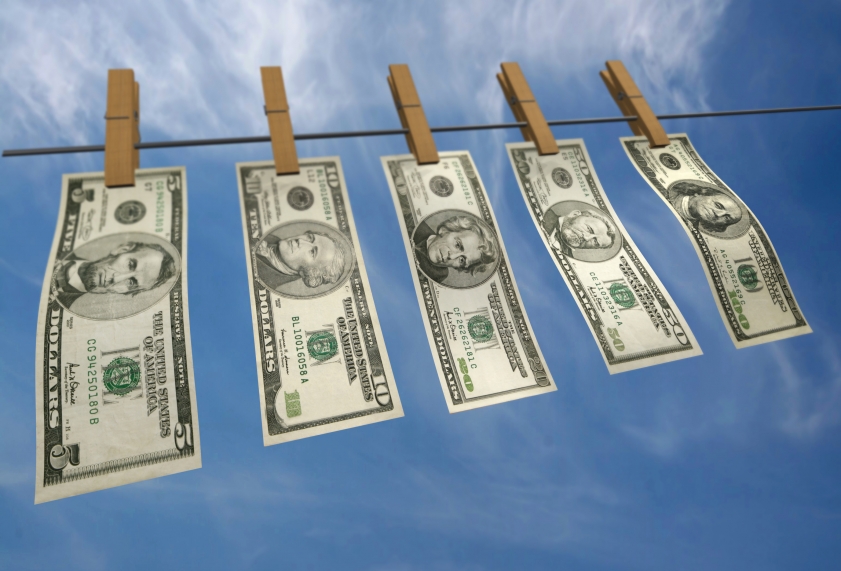
Money laundering is a criminal act perpetrated by individuals in which they disguise the real ownership and control of the proceeds of illegal conduct by making these proceeds look like it was achieved through a legitimate means or source.
There are different ways in which these criminally derived properties may be laundered. It is on record that majority of the criminally derived money is laundered through financial institutions, although it could still be carried out or may be successful without the assistance of the financial sector. The types of products and services rendered by the financial services industry i.e. managing, possessing and controlling property and money belonging to others, implies that it is susceptible to abuse by money launderers.
Money laundering involves three stages; placement, layering and integration
Placement- Simply put, it is the movement of money from its source. Most often, the source can be easily disguised. The cash is then placed into circulation through different channels; financial institutions, bureau de change, shops, casinos, or any other businesses, both internationally and locally. The process of placement can be achieved by:
· Bank Complicity: This is when a financial body such as banks is controlled or owned by individuals suspected to be co-partners with drug dealers and other crime groups. With this, laundering becomes easy and less daunting for money launderers. Total liberalization of the financial industry without a proper check and scrutiny also allows laundering.
· Currency Smuggling: This involves the illegal movement of physical cash and monetary instruments away from a country. This process is carried out in such a way that it does not leave any trace of discernible audit trial.
· Blending of Funds: Financial institutions act as a hiding place for most launderers because it is believed that the best place to hide money is with a lot of other money. Alternatively, what these launderers do is that they use the money gotten illicitly to set up front companies. With this setup, it makes it look like the funds have been obtained from legal transactions.
· Currency Exchange: In most institutional economies, there is a liberalization of foreign markets that provides a gateway for money movements and as such, laundering activities can benefit from these.
· Asset Purchase: Another easy way of money laundering is buying of assets with illicit cash. This is done mainly to disguise the illegal proceeds in form of equivalent valuable assets but in a less conspicuous form.
· Security Broker: Brokers can help in the process of money laundering by organizing huge deposits of cash in a way that changes the actual source of the funds.
Layering- This is the second stage of money laundering. The main aim of this stage is to increase the complexity of laundering activity. With layering, it becomes difficult for the law enforcement agencies to uncover or detect any illicit activity. The known methods under layering are:
· Buying of Material Assets With Cash Then Resold:It is more difficult to trace assets that are bought through illicit proceeds and then resold either locally or internationally.
· Funds Converted into Monetary Instruments: Once the process is successful within the financial institution, it becomes easier to change the proceeds into monetary instruments. This can be achieved using money orders and banker’s drafts.
Integration- This is another trick played by money launderers. It involves the movement of previously laundered funds into the economy using the banking system as its main channel, and such funds appear to be normal business proceeds. This is in a way different from layering because in the integration process, identification and detection of laundered proceeds is provided through informants. The following are the known methods used:
· Foreign Bank Complicity: This is a sophisticated way of money laundering. It involves the usage of foreign banks to hide your money and it becomes a very difficult target for the law enforcement agencies.
· Property Dealing: A common practice among criminals is the sale of properties to integrate money back into the system.
· False Import or Export Invoices: Falsification of invoices by an import or export company has been confirmed as an effective way of integrating illicit funds back into the economy. This involves hyper-valuation of documents to justify the value of proceeds received from export or the funds later deposited in local banks.
· Front Companies and False Loans: In this process, criminals lend themselves their own laundered money in such a way that it looks legitimate. This is carried out by registering a front company. This is common in countries with corporate secrecy laws.
BHATIA & CO, INC, CPAs|
|
